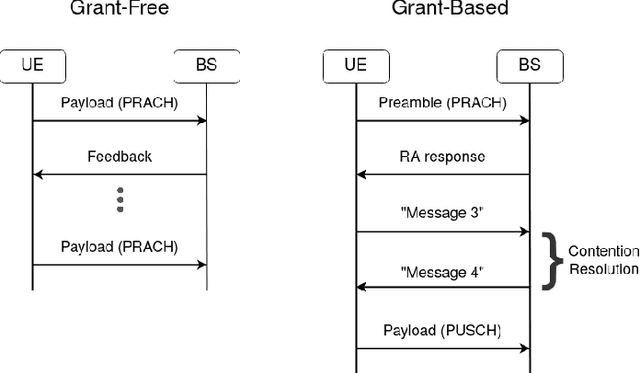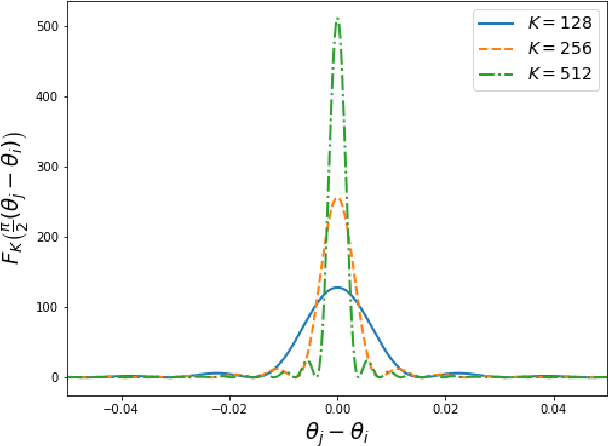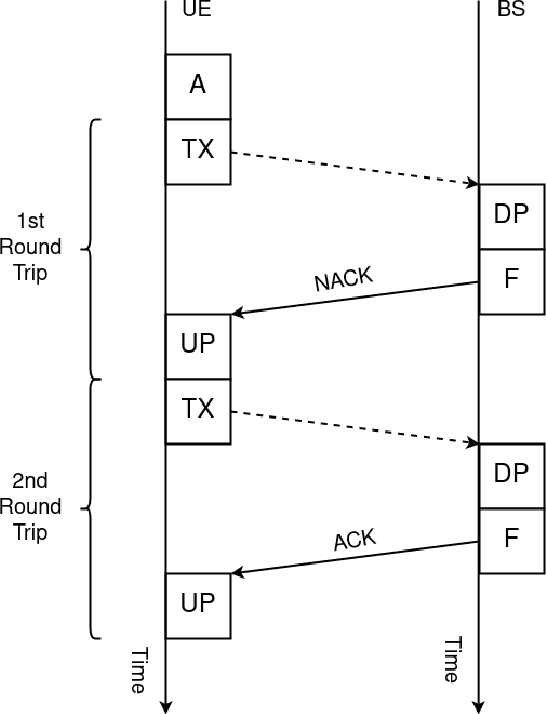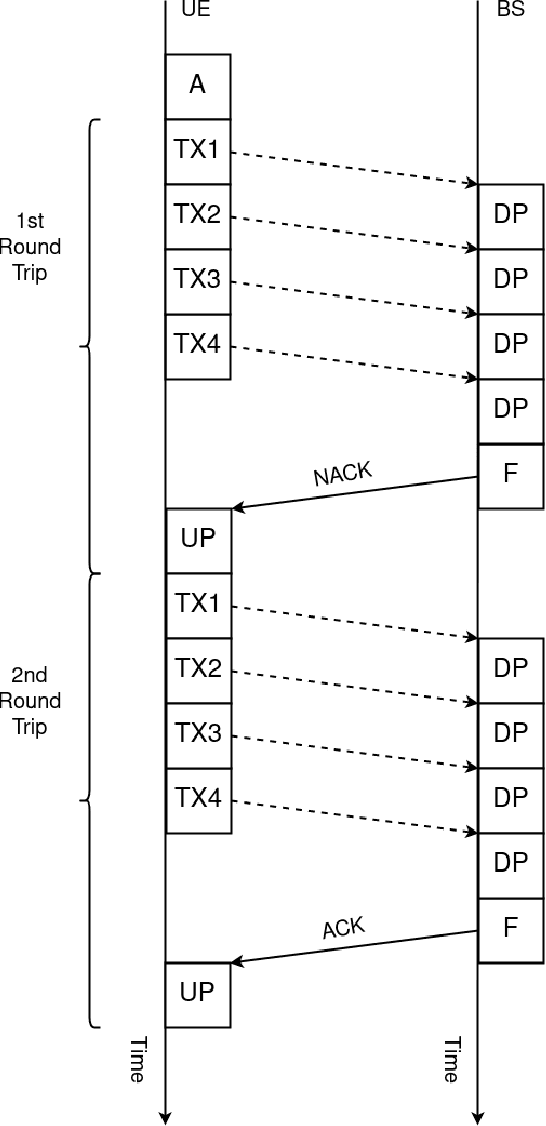Reliability and User-Plane Latency Analysis of mmWave Massive MIMO for Grant-Free URLLC Applications
Paper and Code
Jul 17, 2021



5G cellular networks are designed to support a new range of applications not supported by previous standards. Among these, ultra-reliable low-latency communication (URLLC) applications are arguably the most challenging. URLLC service requires the user equipment (UE) to be able to transmit its data under strict latency constraints with high reliability. To address these requirements, new technologies, such as mini-slots, semi-persistent scheduling and grant-free access were introduced in 5G standards. In this work, we formulate a spatiotemporal mathematical model to evaluate the user-plane latency and reliability performance of millimetre wave (mmWave) massive multiple-input multiple-output (MIMO) URLLC with reactive and K-repetition hybrid automatic repeat request (HARQ) protocols. We derive closed-form approximate expressions for the latent access failure probability and validate them using numerical simulations. The results show that, under certain conditions, mmWave massive MIMO can reduce the failure probability by a factor of 32. Moreover, we identify that beyond a certain number of antennas there is no significant improvement in reliability. Finally, we conclude that mmWave massive MIMO alone is not enough to provide the performance guarantees required by the most stringent URLLC applications.
 Add to Chrome
Add to Chrome Add to Firefox
Add to Firefox Add to Edge
Add to Edge